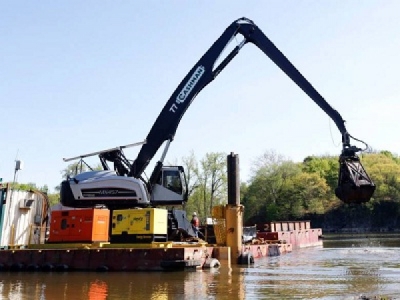
Posted on August 30, 2016
By Scott Fallon, NorthJersey.com
When New York officials called for General Electric Co. this week to conduct another cleanup of the Hudson River, they joined a growing list of government agencies that believe there is still too much PCB contamination in the waterway.
Absent from that push is New Jersey.
Like many administrations before him, Governor Christie has decided not to speak out on the matter, despite a study last year that showed GE’s six-year dredging project will not significantly reduce the amount of PCBs in fish in the lower Hudson.
“We never weighed in on it, nor were we involved in the study,” said Bob Considine, a spokesman for the state Department of Environmental Protection. “It wouldn’t be our place to cast a judgment.”
River advocates said this week New Jersey should no longer stand on the sidelines as it has mostly done for more than a decade. The contamination has forced New Jersey to issue strict restrictions on eating fish caught from the Hudson. It has delayed the dredging of some boat basins along the |Palisades.
And more New Jerseyans are coming in contact with the Hudson than ever before. Riverfront communities like Fort Lee, Edgewater, North Bergen and Hoboken are growing at an enormous rate with almost 13,000 residential units built in the last six years. Kayaking and other recreational activities are abundant along the waterfront, despite the pollution.
“There are just as many people fishing on the New Jersey side of the river as there are on the other side,” said Abigail Jones, a staff attorney for Hudson Riverkeeper. “So it’s just as critical for the state of New Jersey to push for more dredging.”
The pollution dates back almost 70 years, when two GE plants about 40 miles north of Albany began pouring 1 million pounds of polychlorinated biphenyls, a lubricant, into the river. Ever since a key dam was demolished in the 1970s, large amounts of the cancer-causing chemical have continually flowed 200 miles downriver to the shores of New Jersey and New York Harbor.
Almost the entire river down to Bayonne is a federal Superfund site because the pollution is so widespread.
Stark results in study
After years of legal battles, GE agreed to one of the largest Superfund cleanups in history. Last year the company completed a $1.6 billion dredging project that saw 2.8 million cubic yards of polluted mud — enough to fill two football stadiums — removed from a 40-mile stretch in upstate New York.
But just before completion, scientists for the National Oceanic and Atmospheric Administration released a study showing that PCB concentration in the Hudson was two to three times higher than initially believed when the original cleanup was designed more than a decade ago. That fish in the lower Hudson will remain contaminated with PCBs above human health consumption thresholds “for decades longer than predicted under the remedy,” according to NOAA’s analysis.
In a letter last year to the U.S. Environmental Protection Agency, NOAA and the U.S. Fish and Wildlife Service said more dredging may be needed to restore the Hudson’s health and decrease the public health risk from contaminated fish.
Despite those concerns, EPA officials allowed GE to dismantle the company’s decontamination facility, a move that environmentalists feared would ensure that dredging work on the Hudson was over.
This week, New York Environmental Commissioner Basil Seggos sent a similar letter to the EPA saying that while the Hudson is improved, “the work is not done” because there is still too much pollution left in the river. An estimated 35 percent of the PCBs remain in the riverbed.
The EPA is in the middle of a mandated review of the project and is expected to issue a report next year. Agency officials have said the goals of the cleanup are being met and that NOAA had used old data.
Mark Behan, a GE spokesman, said the company is confident that EPA will conclude that the project “achieved the agency’s goals of protecting public health and the environment.”
Environmentalists hailed Seggos’ letter as a strong voice for the lower Hudson. “Essentially we’re not getting any benefit down here,” Jones said.
State’s interest faded
Still New Jersey has never taken an active role, even after a 2001 Assembly hearing at the Englewood Boat Basin called for more state involvement. Many lawmakers around that time — from former U.S. Sens. Jon Corzine and Bob Torricelli to acting-Gov. Donald DiFrancesco — signed petitions urging then-EPA Administrator Christie Whitman to force GE to dredge. But after Whitman moved forward with a dredging plan, interest from New Jersey waned.
Former EPA Regional Administrator Alan Steinberg said New Jersey has never been at the forefront of the cleanup.
“I don’t recall ever having a significant phone call with any New Jersey official on this,” said Steinberg, who lives in New Jersey and served as administrator from 2005 to 2009.
“It was nothing negative,” he said. “When you’re doing Superfund cleanups, you’re focused on the source. So New York was involved heavily and New Jersey wasn’t.”
Gil Hawkins, president of the Hudson River Fishermen’s Association, thinks that should change. He is one of two New Jersey representatives on a community advisory group for the Superfund site.
“You know upstate cleanup has worked by showing the results downstream,” said Hawkins of Leonia. “It is the litmus test. The lower Hudson is the proving ground. So yeah, there needs to be a strong voice from down here.”
Source: NorthJersey.com





